Abstract
Cell viability studies have been performed on human desquamated colonic cancer cells obtained by both in-vivo and ex-vivo techniques, and on desquamated colonic cancer cells from an experimental animal model. There was no evidence of cell viability and I conclude that the hypothesis that suture-line recurrence occurs as a result of the implantation of desquamated tumour cells is of questionable validity. Field change in the colonic mucosa has been studied by examining the reactions of the mucosubstances in the goblet cells. A potential correlation between transitional mucosa at the anastomosis and the development of suture-line recurrence was found and warrants further study. The clinical problem has been investigated by the clinicopathological study of 16 patients developing suture-line recurrence in an attempt to discern the aetiology of each. In all but one the recurrence was due to incomplete excision of cancer or, in one instance, a second primary growth.
Full text
PDF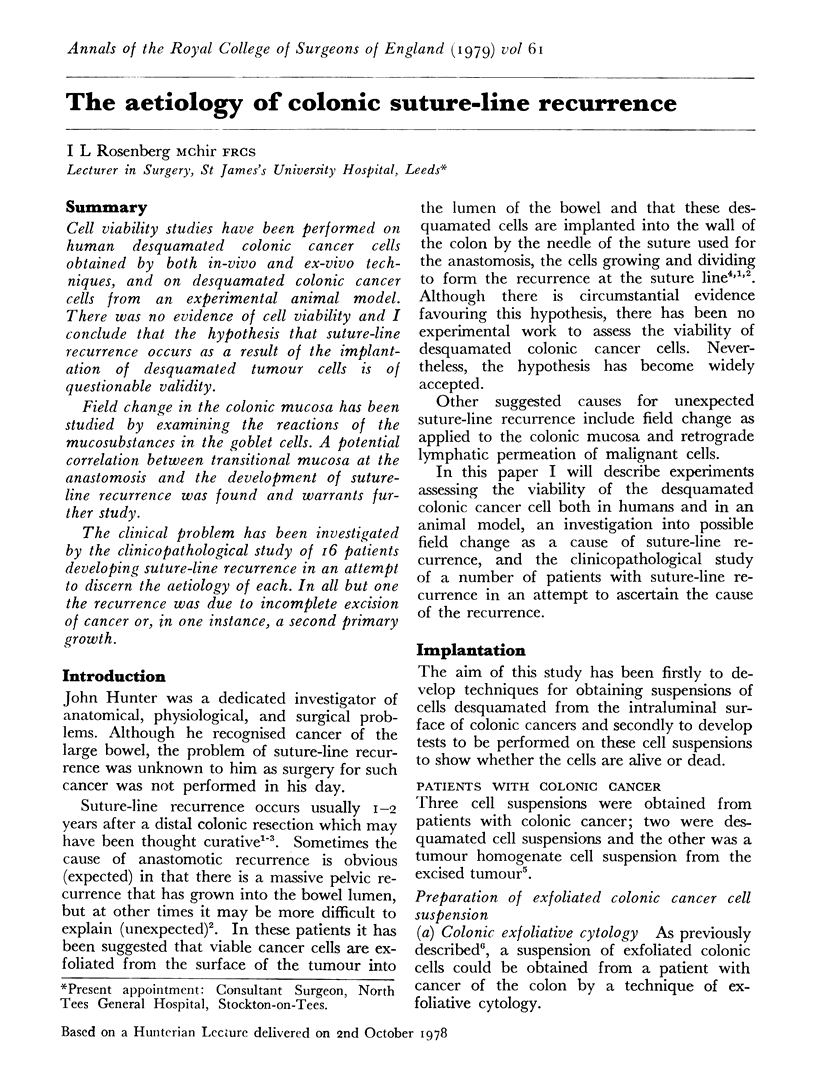
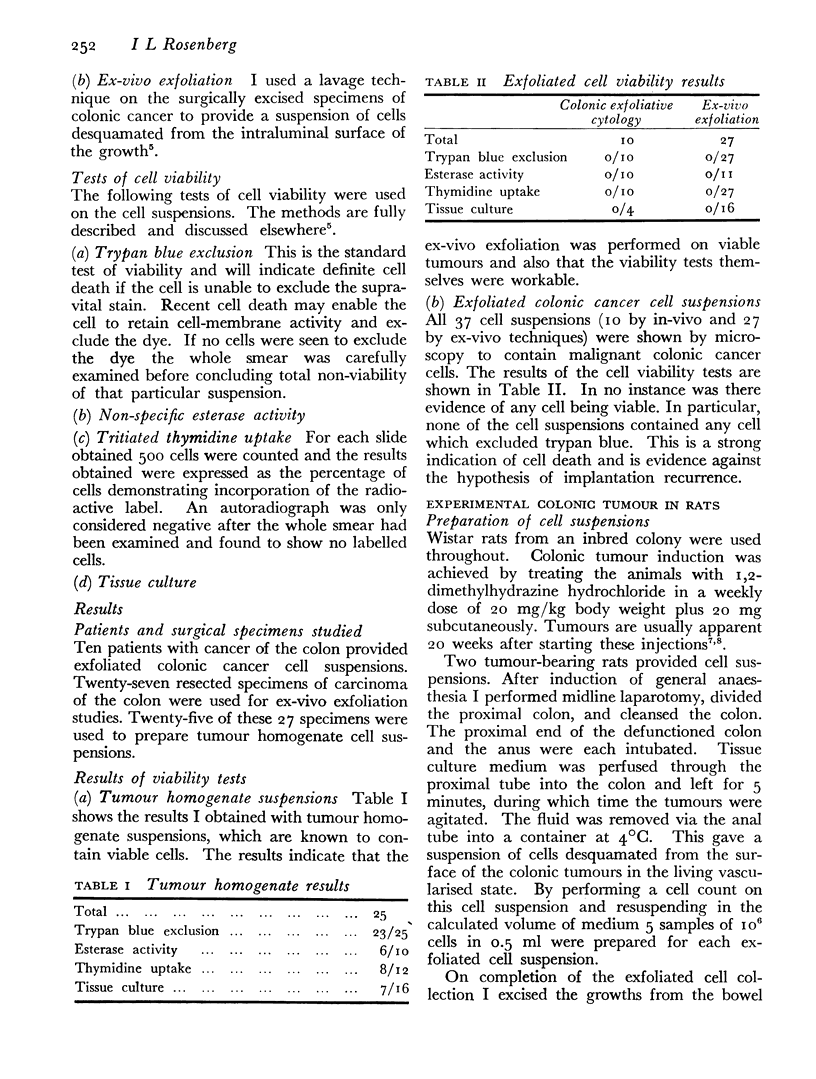
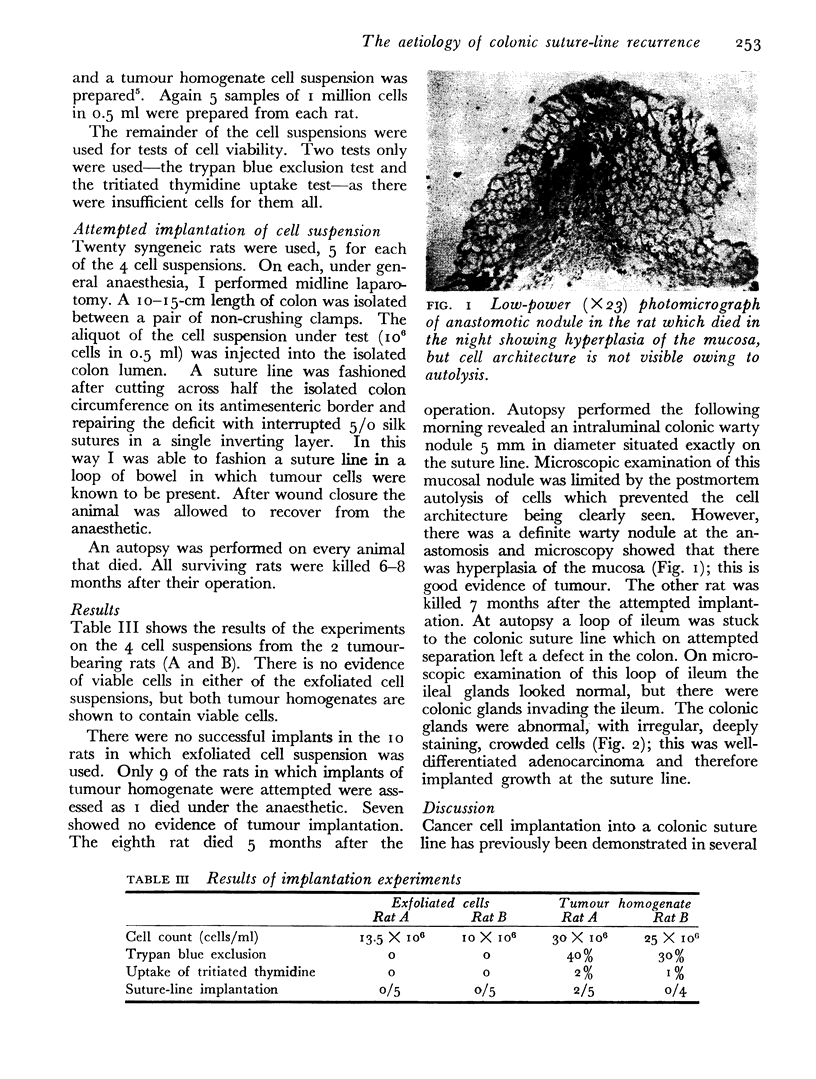
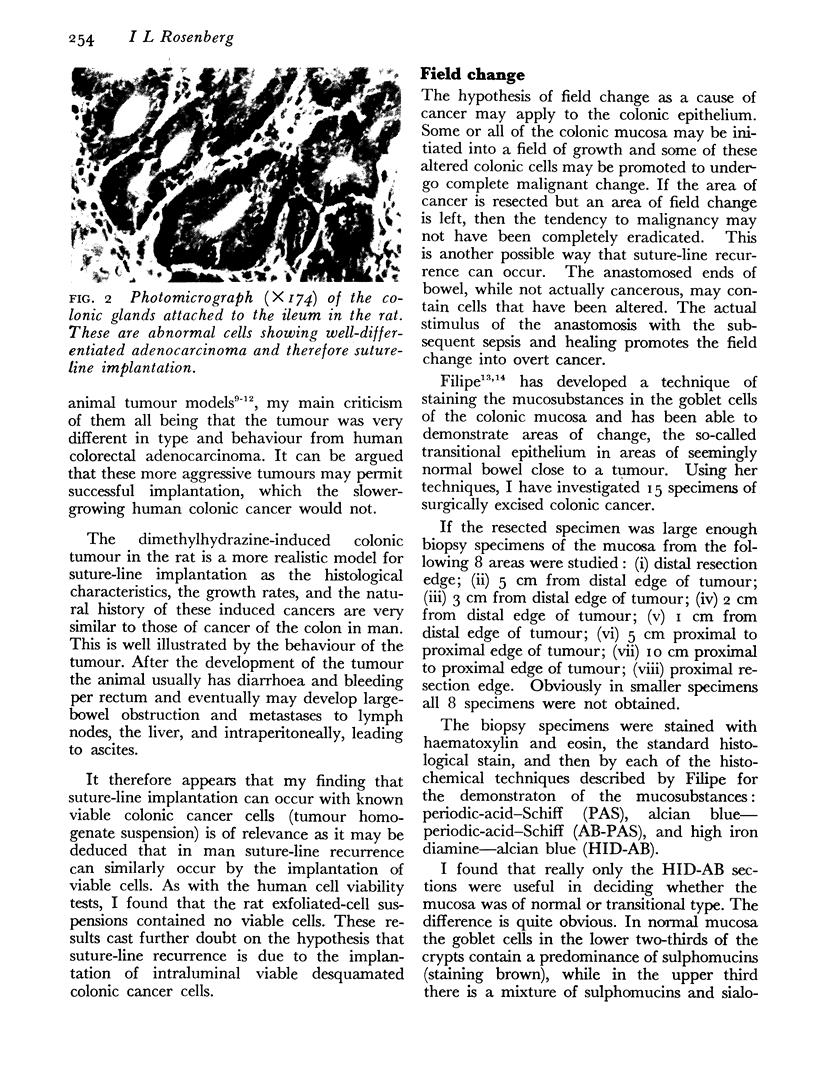
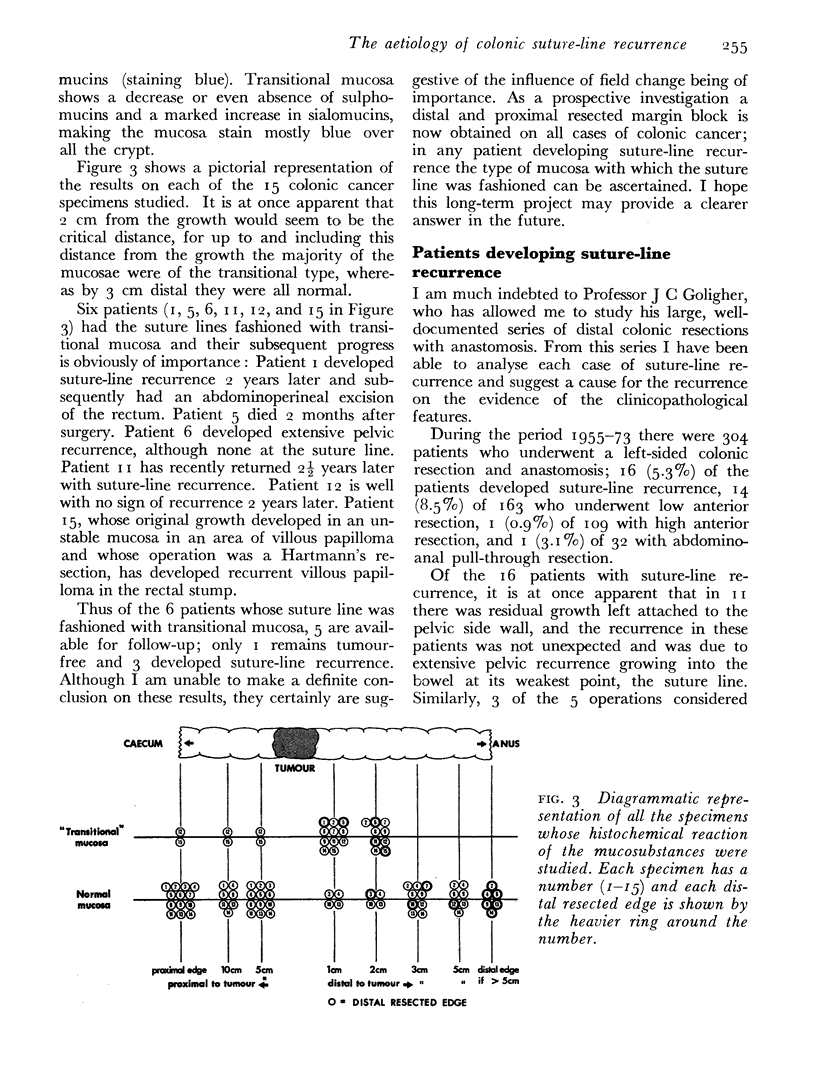
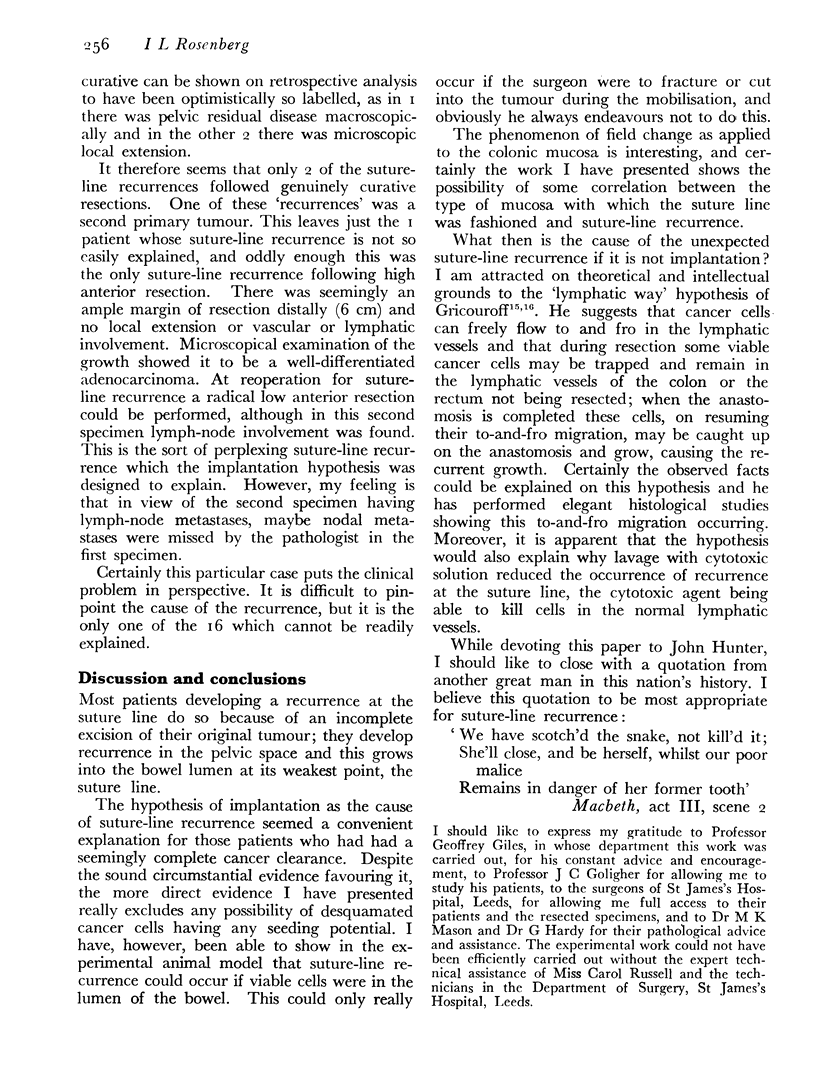
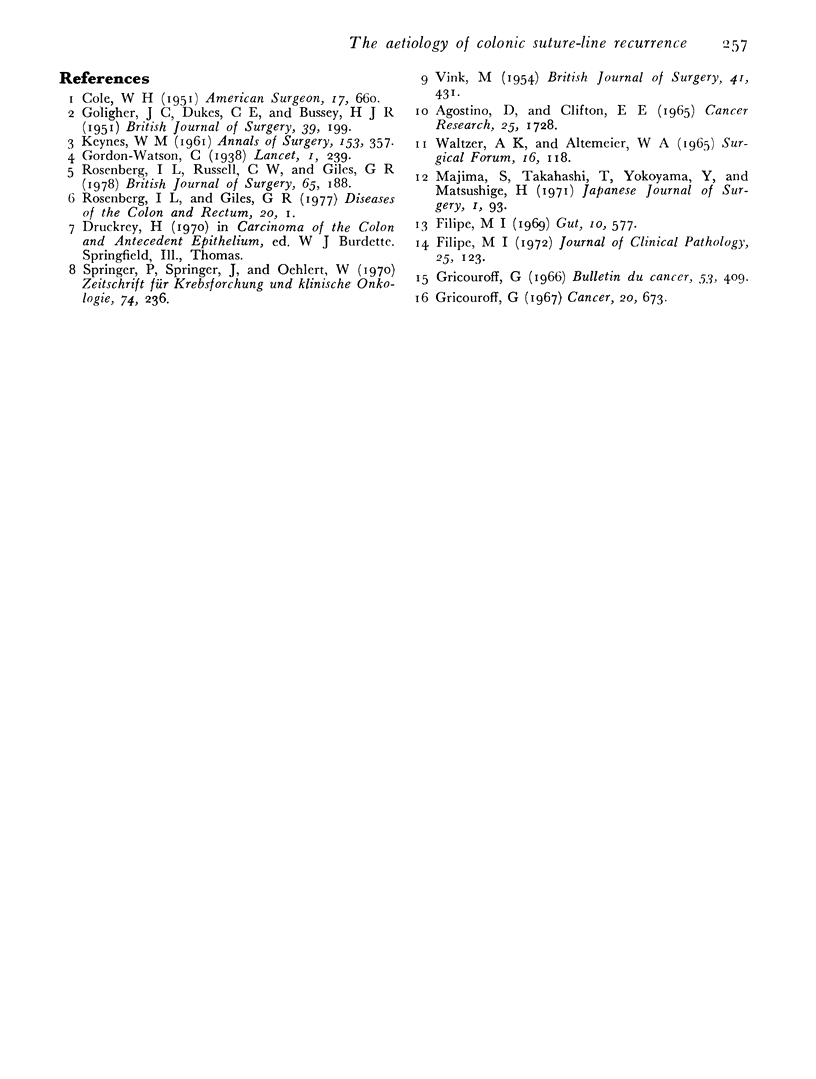
Images in this article
Selected References
These references are in PubMed. This may not be the complete list of references from this article.
- Agostino D., Cliffton E. E. Organ localization and the effect of trauma on the fate of circulating cancer cells. Cancer Res. 1965 Nov;25(10):1728–1732. [PubMed] [Google Scholar]
- Filipe M. I. The value of a study of the mucosubstances in rectal biopsies from patients with carcinoma of the rectum and lower sigmoid in the diagnosis of premalignant mucosa. J Clin Pathol. 1972 Feb;25(2):123–128. doi: 10.1136/jcp.25.2.123. [DOI] [PMC free article] [PubMed] [Google Scholar]
- Filipe M. I. Value of histochemical reactions for mucosubstances in the diagnosis of certain pathological conditions of the colon and rectum. Gut. 1969 Jul;10(7):577–586. doi: 10.1136/gut.10.7.577. [DOI] [PMC free article] [PubMed] [Google Scholar]
- GOLIGHER J. C., DUKES C. E., BUSSEY H. J. R. Local recurrences after sphincter saving excisions for carcinoma of the rectum and rectosigmoid. Br J Surg. 1951 Nov;39(155):199–211. doi: 10.1002/bjs.18003915504. [DOI] [PubMed] [Google Scholar]
- Gricouroff G. Pathogenesis of recurrences on the suture line following surgical resection for carcinoma of the colon. Cancer. 1967 May;20(5):673–676. doi: 10.1002/1097-0142(1967)20:5<673::aid-cncr2820200517>3.0.co;2-g. [DOI] [PubMed] [Google Scholar]
- KEYNES W. M. Implantation from the bowel lumen in cancer of the large intestine. Ann Surg. 1961 Mar;153:357–364. doi: 10.1097/00000658-196103000-00003. [DOI] [PMC free article] [PubMed] [Google Scholar]
- Majima S., Takahashi T., Yokoyama Y., Matsushige H. Studies on the mechanism and prevention of local recurrence of carcinoma at the suture line after colonic resection. Jpn J Surg. 1971 Jun;1(2):93–98. doi: 10.1007/BF02468892. [DOI] [PubMed] [Google Scholar]
- Rosenberg I. L., Giles G. R. The value of colonic exfoliative cytology in the diagnosis of carcinoma of the large intestine. Dis Colon Rectum. 1977 Jan-Feb;20(1):1–10. doi: 10.1007/BF02587444. [DOI] [PubMed] [Google Scholar]
- Rosenberg I. L., Russell C. W., Giles G. R. Cell viability studies on the exfoliated colonic cancer cell. Br J Surg. 1978 Mar;65(3):188–190. doi: 10.1002/bjs.1800650314. [DOI] [PubMed] [Google Scholar]




